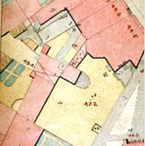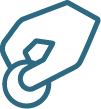
1434 Portuguese ships voyage along the West Coast of Africa
1441 The first instance of Africans being enslaved and taken to Europe or the Americas by Europeans, notably Portuguese traders.
1562 First British slaving expedition is led by Sir John Hawkins.
1618 ‘Company of adventurers of London trading to the ports of Africa’ is established.
1660 ‘Company of Royal Adventurers Trading to Africa’ is established and has a monopoly.
1672 Royal African Company is established and receives a Charter to carry enslaved Africans to the Americas.
1697 The Trade with Africa Act is passed by Parliament.
1727 Quakers in Britain begin to mobilize in opposition to the Slave Trade.
1731 The Royal Africa Company moves away from transporting enslaved Africans to commodities.
1760 Clarkson is born in the Headmaster’s apartment in the Old Wisbech Gramma School.
1766 Clarkson’s Father Rev John Clarkson dies. Family moves to 8 York Row, Wisbech.
1775 Clarkson Leaves Wisbech Grammar School for St Paul’s School in London.
1779 Clarkson is admitted to St John’s College, University of Cambridge, to study Mathematics. He was a Scholarship student and admitted sizar on 27 June 1779, Foundress Scholar 7 November 1780 and received the University’s Members’ Prize for Exercises in Latin prose Middle Bachelor in 1784 and Senior Bachelor in 1785 for the essay ‘Anne liceat invitos in servitutem dare?’ (Is it right to enslave others against their will?). He was awarded the Gower Exhibition in 1779, Hare Exhibition in 1780, 1781 and 1782, the Raines Exhibition in 1782 and Naden Theology Exhibition in 1784. Cambridge University’s definition of an exhibition is: "An award to a student (who is then known as an exhibitioner). Latterly used to describe a lower grade of scholarship, but originally used to distinguish students who held awards but were not supported by the College’s endowment as part of the basic corporate body." For more information about Thomas Clarkson at St John’s College click here
1781 Zong Massacre happens at sea. Approximately 142 enslaved Africans lost their lives when they were thrown overboard by the crew of the British Slave ship, the Zong.
1782 A claim for the loss of the enslaved Africans from the Zong is approved in a Jamaican court.
1783 Clarkson is awarded B. A. A petition against the slave trade is presented to Parliament by Quaker group, The London Society of Friends. The insurers of the Zong go to Court in Britain to appeal the claim, the case is bought to the attention of Granville Sharp by Olaudah Equiano.
1785 Clarkson wins a prize for the essay ‘Anne Liceat Invitos In Servitum Dare?’ Awarded M.A. and ordained Deacon.
1786 Clarkson’s essay is translated and published as ‘Essay on the Slavery and Commerce of the Human Species, Particularly the African’. His ‘A Summary View of the Slave Trade and of the Probable Consequences of its Abolition’ is also published.
1787 William Wilberforce attends a dinner party at Mr Langton’s house and is introduced to Thomas Clarkson and West African textiles collected by Clarkson and is persuaded to represent the campaign against the Slave Trade in Parliament.
1878 Anti-slavery Committee is set up on 22 May. As the researcher for the Committee, Clarkson begins his fact-finding mission regarding slavery, visiting cities and ports including Bristol and Liverpool, where he is nearly murdered. He gathers witness statements from sailors and ships surgeons, views ship muster rolls and explores the trade potential with Africa by speaking to merchants from whom he purchased African produce, wood samples and seeds which form the basis of his campaign chest. He encourages local anti-slavery societies to form and support for petitions to Parliament.
1788 From February to May the Privy Council consider witness evidence, many Anti-Slavery petitions (over 100 petitions were received) and view the contents of Clarkson’s chest. Clarkson covers 1,600 miles in two months and stops in Plymouth where he is introduced to a plan of the Books ship. The Brookes Ship plan is widely circulated through a pamphlet written by Clarkson. Later in the year the Dolben Act came into force limiting the number of slaves in British transports.
1789 Clarkson visits France and meets Vincent Ogé, the Haitian leader. On 12 May 1789, William Wilberforce gives his first abolitionist speech in Parliament based on evidence given and research completed by Thomas Clarkson (in Clarkson’s Essay on the Impolicy of the African Slave Trade). Olaudah Equiano publishes The Interesting Narrative of the Life of Olaudah Equiano, or Gustavus Vassa, the African. Thomas Clarkson promoted the book as further evidence to challenge racist assumptions about African people.
1790 The Sierra Leone Company is founded by Granville Sharp, Thomas Clarkson and Henry Thornton. The bill for the Abolition of the Slave Trade is taken before Parliament but fails.
1791 300,000 people boycott sugar in England.
1792 In March, an Abolition Bill passed by the House of Commons is rejected by the House of Lords. 519 petitions are received in Parliament.
1793 In February, an Abolition Bill is defeated in Parliament. Clarkson steps down as a Director of the Sierra Leone Company. Clarkson suffers poor health through constant travelling and incurs enormous costs for witness expenses.
1794 £1500.00 is raised by subscription to pay Clarkson’s expenses. In France, slavery is abolished in all its territories. On 4 February, France abolishes Slavery in French colonies.
1796 Clarkson marries Catherine Buck. They set up home at ‘Woodside’ Ullswater in the Lake District where they farm. Although ordained, Clarkson never took up a position. At this time the Clarksons became close friends of William and Dorothy Wordsworth and Coleridge.
1797 Death of Olaudah Equiano.
1803 The Clarksons move to live with Catherine’s father, William Buck at Bury St Edmunds.
1804 Haiti is established following rebellion on the island of St Domingue. An Abolition Bill was passed in House of commons by June but did not complete passage through the House of Lords.
1805 Bill reintroduced and rejected by the House of Lords.
1807 ‘An Act for the Abolition of the Slave Trade’ is passed by Parliament and receives Royal assent on 25 March. Clarkson becomes Director of the African Institution. The Sierra Leone Bill is passed by Parliament.
1808 Publication of Clarkson’s ‘History of the Rise, Progress and Accomplishment of the Abolition of the African Slave-Trade by the British Parliament.’
1813 The Slave Trade is banned in Sweden.
1814 Clarkson becomes Chairman of ‘The Society for the purpose of Encouraging Black Settlers at Sierra Leone and the Natives of Africa generally in the Cultivation of the soil by the sale of Their Produce’. This organisation trades directly with the ‘friendly Society of Sierra Leone’ for the next five years. The Slave Trade is banned in the Netherlands.
1815 Clarkson in Paris. Meets the Russian Tsar Alexander 1. Anti-slavery tracts distributed at the Congress of Vienna. Becomes an adviser, by correspondence to Henry Christophe – King Henry 1 of Haiti. In Britain the Corn Laws are brought in to protect agriculture from imports.
1816 The Clarksons move to Playford Hall, Suffolk. Thomas becomes Squire. Catherine translates Cries of Africa into French with the help of B Laroche.
1817 A treaty is signed between Spain and Britain in which Spain agrees to abolish the Slave Trade. Friday 25 July – Thomas Clarkson and family visit Wisbech.
1818 Clarkson attends the Treaty of Aix-de-la-Chapelle.
1820 Slave Trade ban comes into effect in Spain.
1821 After the revolution in Haiti, Henry’s widow, Mary Louise Christopher and their two daughters stay with Clarkson at Playford Hall.
1823 The ‘Society for the Mitigation and Gradual Abolition of Slavery throughout the British Dominions’ which is today known as Anti-Slavery International, was founded by Thomas Clarkson and new campaigners, Thomas Fowell-Buxton, Joseph Sturge and other abolitionists. Thomas Clarkson heads back out on the campaign trail.
1824 ‘Immediate, not Gradual Abolition or An Inquiry Into the Shortest, Safest and Most Effectual Means of Getting Rid of West Indian Slavery’ by Elizabeth Heyrick is published. Heyrick and a network of groups of women engaged in anti-slavery campaigning promoted a boycott of West Indian sugar produced by slaves. Clarkson fully supported the campaign. At its height around 400,000 people gave up West Indian sugar.
1831 A rebellion in Jamaica which took began on 25 December and lasted eleven days was led by Baptist preacher and enslaved African Samuel Sharpe. It had a significant impact in furthering the efforts of the abolitionists in the campaign for abolition and the forthcoming Abolition of Slavery Act.
1833 Slavery in the British Empire abolished with the passing of the Abolition of Slavery Act which took effect in 1834. The Act tied formerly enslaved Africans into an apprenticeship for six years before full emancipation. Clarkson begins to correspond with members of the anti-slavery movement in the USA. 29 July, death of William Wilberforce.
1834 Start of quarrel with Samuel and Robert Wilberforce, William Wilberforce’s sons. 1 August 1834 Abolition of Slavery Act comes into force.
1837 The Clarksons’ only son, Thomas dies. Despite Clarkson’s campaigning against giving compensation payments to Slave owners, ‘The Compensation Act’ was passed by Parliament.
1838 Clarkson publishes ‘Strictures on a Life of William Wilberforce’ in reply to charges by the Wilberforce brothers. Clarkson’s campaigning against apprenticeship results in the abolition of the apprenticeship system. 29 November, Clarkson is awarded the Freedom of the City of London.
1839 A portrait of Thomas Clarkson by the artist Samuel Lane is commissioned by the Wisbech Corporation which today hangs in the Wisbech Town Council Chamber in Wisbech. It is one of only seven paintings featuring Thomas Clarkson, six of which were portraits, all in oils apart from one watercolour painting by Edward Chalon.
1840 Anti-slavery convention in London, Clarkson elected President.
1844 Wilberforce brothers apologise to Clarkson.
1846 Formerly enslaved American anti-slavery and civil rights campaigner Frederick Douglass visits Thomas Clarkson at Playford Hall in the summer. 26 September, death of Thomas Clarkson.
1848 France abolishes Slavery.
1857 A memorial to Thomas Clarkson is erected at the Church in Playford Suffolk.
1875 A memorial to Thomas Clarkson is proposed for Wisbech and funds are raised by the Peckover family and local donors.
1880-1 The Clarkson Memorial on Bridge Street in Wisbech was erected.
1888 Slavery is abolished in Brazil on 13 May.

Support the museum today
To maintain and conserve our valuable resources, we need your contributions, please support us by donating today.






